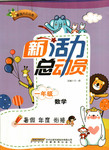题目内容
Tony is a quiet boy and he is accustomed ______ at meals, which is always appreciated.
A. not to talk B. to not talk
C. to not talking D. not to talking
 新活力总动员暑系列答案
新活力总动员暑系列答案 龙人图书快乐假期暑假作业郑州大学出版社系列答案
龙人图书快乐假期暑假作业郑州大学出版社系列答案A.Means of e?waste recycling B.How e?waste comes into being C.The benefit of e?waste recycling D.The technologies of e?waste recycling E.The importance of the electronic waste recycle F.Modern technology brings convenience and e?waste |
1.
Modern technology does bring us many conveniences(便利),from Wi?Fi(无线网络)enabled cell phones and ever? smaller laptop computers that make entire lives easy to energy? efficient washers that use half the power and time to complete their tasks. However,these new toys and equipment finally become electronic waste ( 电子垃圾)(e? waste)once they are out of use.
2.
E? waste includes everything from empty printer ink containers to broken refrigerators. As people buy new items to replace aging electronics or make upgrades(升级),more electronic waste comes into being. In some cases,such as 2009's switch from analog(模拟)to digital television broadcasting in the United States,changes in technology are so great that old equipment may not even work at all with new systems.
3.
There are many reasons why it is important to recycle electronic waste. Much of the material used to construct electronics,including metal and plastic parts,can be recycled into new items at a discount of the cost and energy use needed to create things from new raw materials(原材料). Additionally,many electronics contain poisonous substances (有毒物质)that are harmful to the environment and could be deadly if they go into an area's groundwater. When properly recycled,they can be reused and will not do harm to the environment. Because of these environmental concerns,many areas require by law that electronic waste be properly recycled.
4.
The availability(可用性)of e?waste recycling programs varies from place to place. In some areas,annual collections are held once or twice a year as a means of dealing with e?waste as well as used engine oil or other waste that is harmful to the environment. There are also some good alternatives (替代品) to recycling your e?waste. Any items that are in working condition can be given to friends or donated to charities(慈善机构)like Goodwill or the Salvation Army,who rely heavily on donations ( 捐赠) . Freecycling ,or passing on your unwanted items to those in need of them,is also a means of finding new homes for used items.
5.
E?waste recycling helps protect the environment by reducing the amount of poisonous materials placed in landfills(垃圾场)and saving recyclable parts to save energy and other resources. Recycling is a way of life. Stick to that choice every single day and recycling will become second nature to us.

